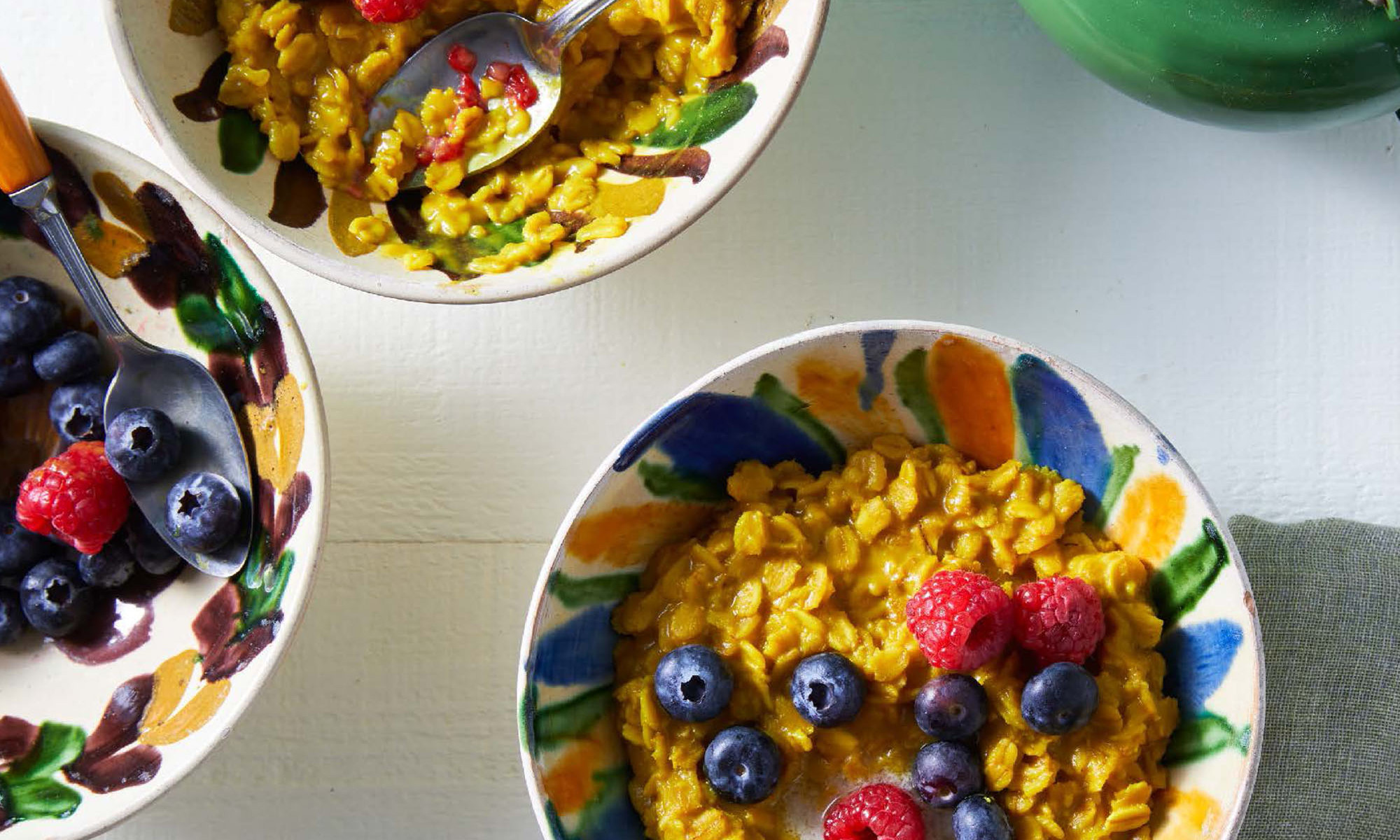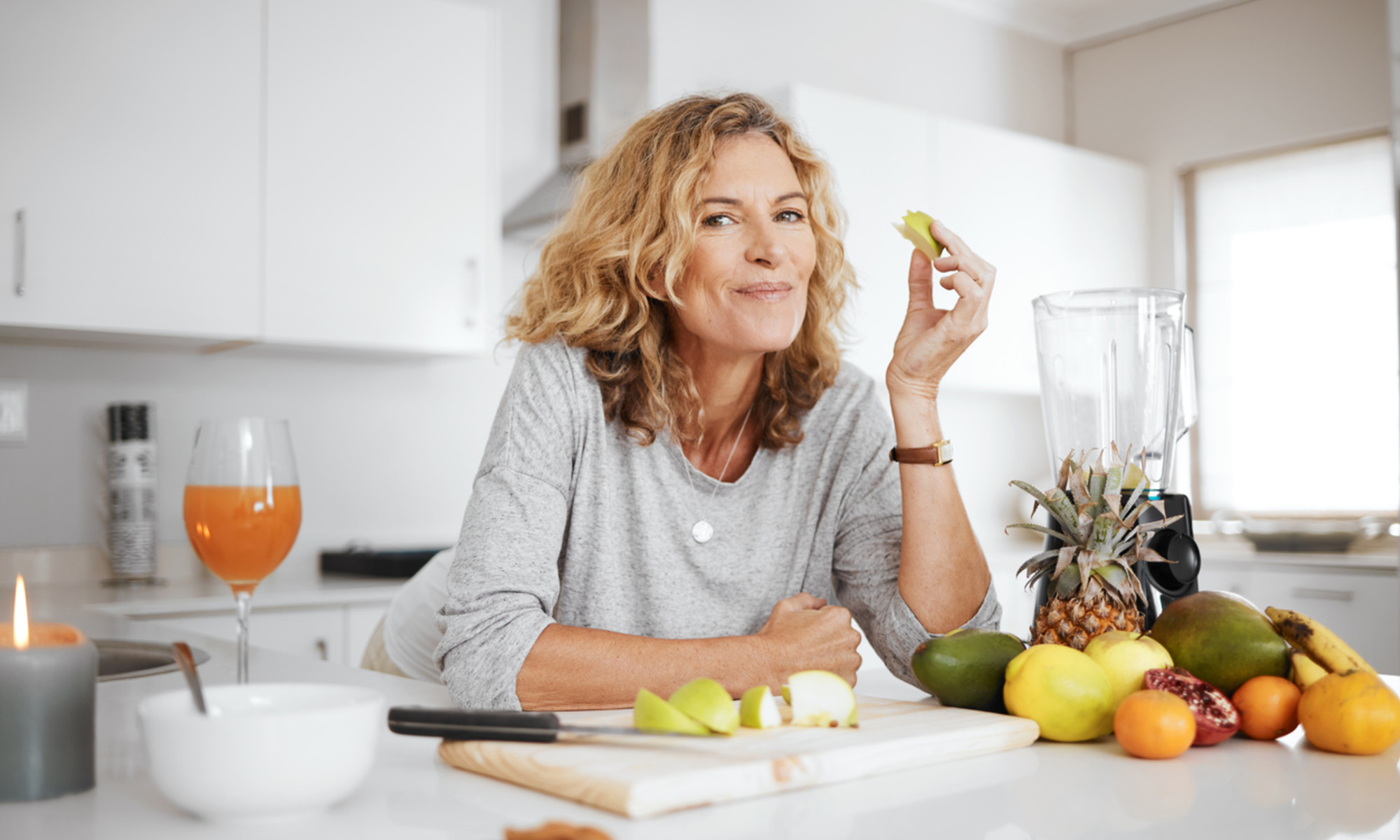The Anti-Inflammatory Oatmeal An RD Eats To Start Her Day Right
Add them to your meal prep rotation.


Registered Dietitian & Cookbook Author
By Maya Feller, M.S., R.D., CDN
Registered Dietitian & Cookbook Author
Maya Feller, MS, RD, CDN is the founder of Maya Feller Nutrition, a private practice that specializes in nutrition for chronic disease prevention. Maya shares her approachable, food-based solutions with millions of people through regular speaking engagements and as a nutrition expert on Good Morning America. She is the author of "Eating from Our Roots: 80+ Healthy Home-Cooked Favorites from Cultures Around the World."
Image by Christine Han / Christine Han January 24, 2023 Our editors have independently chosen the products listed on this page. If you purchase something mentioned in this article, we may Morning oats are an incredibly nourishing way to start the day, especially when paired with antioxidant-rich turmeric and black pepper. This savory version uses jaggery, an unrefined sugar, as the sweetener, and boasts a beautiful yellow-orange color. If you are short on time, you can batch prepare and reheat it as needed. 
Advertisement
This ad is displayed using third party content and we do not control its accessibility features.
Golden Oatmeal
(India)
Serves 2
Advertisement
This ad is displayed using third party content and we do not control its accessibility features.
Ingredients:
Ingredient Highlight:
Cardamom is an excellent source of potassium as well as other vitamins and trace minerals. It has some antioxidant properties and may aid in digestion.
Advertisement
This ad is displayed using third party content and we do not control its accessibility features.
Method:
Historical highlights of India
The subcontinent of India houses one of the most diverse societies in the world. With a huge multitude of regional and cultural influences, interwoven with caste, religion, and heritage, the complexities of Indian cuisine can be attributed to the incorporation of flavors and culinary techniques from the societies that have shaped India’s history.
Central Asian invaders formed several dynasties from the twelfth to the sixteenth centuries, followed by the Mughal dynasty from the sixteenth to the nineteenth century. The British East India Company came to India to trade and stayed in power from 1757 to 1858, and then the British Crown assumed rule as the British Raj from 1858 to 1947. These invaders brought with them new ingredients such as dried fruits and leavened wheat breads as well as preparation techniques such as cooking meat on skewers in the tandoor.
British and other Western powers such as Portugal ventured to India in search of spices and dominance. They brought along potatoes, tomatoes, and chilies, which are now an integral part of Indian cuisine. The food system encourages in-season consumption due to the vast geography and climate.
Influences from neighboring countries have an effect on regional staples. South India shares similarities with China and other nearby Asian countries, focusing on rice, vegetables, and seafood, while Northern India’s staple grain is wheat and the eating pattern is reliant on meat and dairy products.
Recipe from EATING FROM OUR ROOTS. Copyright © 2023 by Maya Feller. Photography copyright © 2023 by Christine Han. Published by goop Press/Rodale Books, an imprint of Penguin Random House, LLC. Reprinted with permission.
Advertisement
This ad is displayed using third party content and we do not control its accessibility features.

 Kass
Kass 































